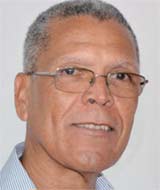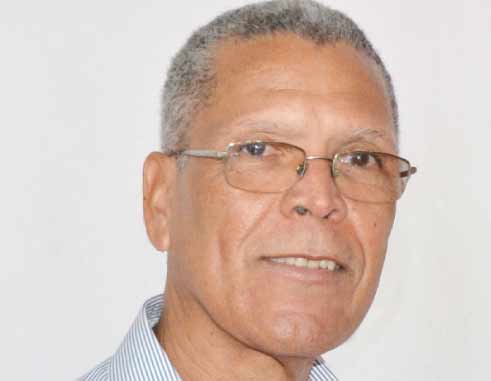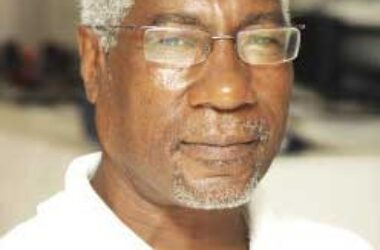
IN our discussion last week, we explored the impact of investment in the agriculture and construction sectors, concluding that while investment in both sectors was desirable, the data provided by the IBRD arm of the World Bank on Jamaica also suggested that the impact on economic growth was identical for the two sectors.
That IBRD report on Jamaica however also provided information on employment, and there the two sectors diverge, with investment in agriculture generating more than 2.5 times the level of employment than investment in construction. From this data we examined the levels of investment necessary to address our unemployment, concluding that investment in agriculture was essential to addressing our unemployment issues.
In that discussion, we did not address the understandable question of what those persons in agriculture were supposed to produce, but a similar issue arises with the construction of new hotel rooms – how are we to fill them? Our food import bill is however in excess of EC$350m annually, and as the current approach by the SLHTA and the longstanding relationship between our farmers and Massy Stores both demonstrate, there is more than ample room for the development of agriculture in St. Lucia.
Last week’s discussion was intended also to demonstrate that we do not need a crisis approach to the management of our economy, and that the sober advice provided by the CDB in their review is sufficient and should be followed. The CDB however makes a further point, which is that for economic growth, we need to invest in transformative infrastructural projects.
And although transformative projects tend to come with high price tags, a project having high cost is not necessarily a transformative one. So that for example, while development of Hewanorra Airport is essential to our continued growth in tourism, it is not necessarily a transformative project. In that regard however, Barbados is currently proposing to invest BDS$240m, (EC$324m), on development of their airport, arguably already one of the best in the region, and it provides a sense of the challenge which we face if we are to remain competitive.
The construction of that new highway from Gros Islet to Dennery and then to Vieux Fort would however be a transformative project for the country, and one which received passing mention during the recent CDB press conference. While some object to the project on the basis of its potential cost, the larger point is that we cannot afford not to undertake this project, and in that sense, it is transformative.
It is transformative, as in the first instance the Barre de l’Isle represents a stranglehold on our tourism and threatens to disrupt the operation of our major tourism plant with the occurrence of every thunderstorm. We cannot continue to operate and/or expand our tourism plant in the north while this threat persists, neither can these hotels remain competitive with airport transit times in the vicinity of two hours each way.
And so, if we construct a highway from Vieux-Fort to Gros Islet that reduces travel times from Vieux Fort to Castries to 30 to 40 minutes, with another 15 minutes or so to Gros Islet, we will transform the communication between the north and south of the island. We should note too that this new highway needs to address not only travel time, but also the level of effort expended on making that connection, minimizing the winding, up-hill and down-hill nature of the drive.
If we significantly reduce the travel time to Vieux Fort and ensure a comfortable drive, then we also change the nature of our interaction between the north and south of the island, and that means that the duplication of infrastructure can no longer be justified even as we know that we cannot afford it. So that, for example, if it is going to be challenging for us to operate and maintain the new Owen King EU hospital, how are we going to do that and operate and maintain St. Jude’s as well? But if we can travel comfortably between the two, then the role of one of these hospitals can be re-visited.
There is more to this new link between the north and the south however, as it must also consider a connection to Castries, and that consideration takes us to the question of what we are to do with our capital city. We all know the issues that Castries faces, but, even with these issues, Castries is our centre for cruise tourism, and it is likely to remain so. In any event, our capital city requires our attention.
Re-development of Castries is therefore another transformative project that at some point we will have to undertake even as we hear of the number of individual new building projects that are being proposed. We have heard, for example, the suggestion that the current headquarters of the OECS should be moved to Castries, that we need a new Hall of Justice and a new Cultural Centre both of which we assume for Castries, while we are also to construct new headquarters for our police in Castries. Then, new headquarters are also required for our Fire Services.
As an aside, the proposed redevelopment of the old Golden Hope facility as the new police headquarters requires particular consideration. Buildings are generally purpose built, and conversion and retrofitting tends to be expensive, particularly so with the requirements for IT and secure communication. Whatever the solution adopted, great care will be required if we are to produce a functional, durable structure.
Similarly, the construction of a new Fire Brigade Headquarters may be cost effective considering the current rental, but there is little need for it to be located within the city. A dispatch office for fire and ambulance services can be located anywhere, and the Fires Services can determine the most appropriate locations for the housing of fire tenders and ambulances in and around Castries.
But, whatever new buildings are determined for Castries, we are going to have to find spaces for them, and that brings into question the old issues of relocating the Government Printery and the General Post Office. We might also want to question the need for a dedicated Government printery. The requirement for space also brings into question the utility of the existing CDC buildings, and the attendant need to redevelop housing in and around Castries. Then there is the issue of the City Hall and its utility, and the need to address parking for the city.
If however we consider the redevelopment of Castries in the context of vastly improved road communication with Vieux Fort, then administrative and development services can easily be located at points along the way. So that, for example, while Halls of Justice tend to be located within capital cities, if Dennery is an easy 15 minute drive away, there’s no real reason why the criminal courts could not be located there, near to the prisons, even if the administrative functions and other courts remain in Castries. Agricultural education, training and administration can all also be located in the Mabouya Valley.
A new Castries to Dennery Highway accompanied by re-development of the existing Dennery to Vieux Fort road is a truly transformative project, as not only does it address the threat that the Barre-de-l’Isle poses to our most important industry, but it changes the relationship between Castries and Vieux Fort, and allows us to decentralize public services without duplicating them.
That new highway would have little to do with the opening up of new lands for commercial and/or housing development, although both of those are possibilities, however small they may be. Coupled with the development of Hewanorra Airport, this new highway will have everything to do though with the expansion of our tourism industry and with the re-development of Castries into a functional and beautiful space that we can all enjoy and be proud of.
In all respects, this is our highway to the future.
As we go into the festive season, the next three articles look at some of our social issues. We return to a final recommendation contained in that CDB Review early in the new year.














Like the Dennery highway-East Coast Highway , Criminal Court, Agro Edu center for Mabouya Valley details and overall decentralization oversight.
However, Castries redevelopment needs a very broad new canvass on the scale of the thinking that went into designing Brasilia, Brasil.
Castries can be the city that represents the geographical crossroads and potential commercial secretariat epicenter of the Eastern Caribbean- Panama Canal- Europe transport routes.
Mr. Engineer, nothing less than bold redesign that even eliminates fossil burning combustion engines in the new city is required. Think tank research & developmental on a monumental scale is required before a single brick, pane of glass or supporting steel beam is erected.
DM
De Think Tank is already in place in the form of “The Vision Commission”, in which his true,true friend is part and parcel. At the helm is yours truly, Pal rep from VF ex-wife. And she leading the blind with a 300k per year budget. De man know what he writing about……The highway to the future to coming. To whose future? you think these old boys playing……..
Thanks for this provocative piece Mr. Prescod.
An alternative highway linking the north and south would be potentially transformative. But we still don’t know whether the route being considered will significantly reduce travel times and/or increase degrees of travel comfort and safety, compared to the current Barre D’isle route.
However, there are no doubts in my mind about the transformative value of the redevelopment of Castries. To me, this is a far more urgent and transformative project than a new highway.
It’s an imperative!
You have approached this imperative solely from the standpoint of the construction of new public buildings. But for me, that type of transformation would only be physical and superficial. Real transformation will not be achieved if the many social issues, including housing and settlement upgrading are not addressed.
There is no lack of studies and reports on the redevelopment of Castries. It’s beyond me why successive Governments have not aggressively implemented the recommendations in these studies. While the dithering has gone on, Castries has lost any claim it may have to being a City.
I agree with your writer-engineer colleague John Peters, who argues in a piece in this issue that Saint Lucia is falling behind. We must bring our governance to the stage where, once we confirm the need for action, that we take prompt and purposeful action.
.